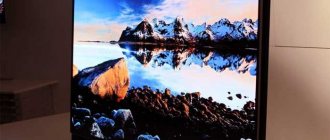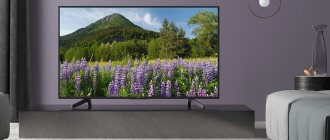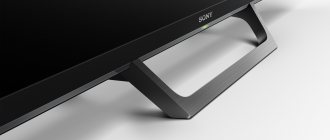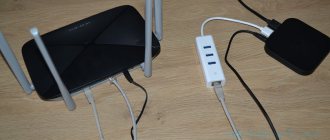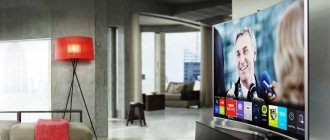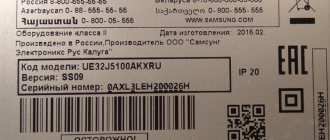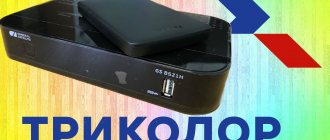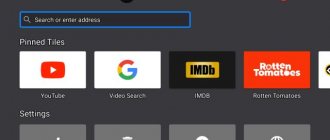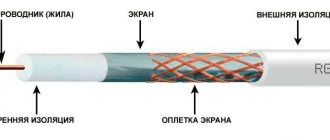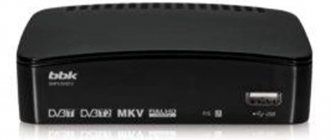The modern market mainly includes TVs that support Smart TV. Therefore, every potential buyer faces a very difficult question: what criteria should you pay attention to before purchasing equipment? There are many important aspects that need to be taken into account, but if you evaluate the functionality of the Smart TV platform, be sure to pay attention to what operating system it runs on.
All Smart TV platforms
When we told you How to choose your new TV, we already told you: picture and sound quality are the really important aspects . The rest of the features are add-ons that will help you decide which model to buy.
The problem is that if you want to answer your questions when comparing their smart TV platform, you need to know a little about what they offer and how they behave. Because it may also be that, despite the many options, for the way you intend to use the TV, you would prefer a more “basic” and more flexible option, if both offers convince you regarding picture and sound.
Anyway, let's focus on what interests us. Which option is better: webOS, Tizen, Android TELEVISION, ...? Before we answer, let's take a look at what they are like and what they have to offer.
Applications
The number of applications developed for both platforms is not impressive yet. There are even fewer useful ones; mostly you can find all sorts of things that will amuse you for an hour or two and then get boring. We believe that app developers are simply waiting for the next explosion in smartwatch sales, and then things will take off.
By the way, Tizen was released somewhat later than Android Wear, and therefore is still a little behind in terms of the number of applications, but Samsung made sure that the most important products were present in the assortment - for example, applications for Twitter, Ebay, programs for managing a smart home, etc. Further. You can design your own watch face using the popular Time Maker.
Android TV
Android TV is the latest smart TV platform to hit the market. Google's big-screen adaptation of its popular mobile operating system. At first, its interface was a little rough, but it has now improved significantly. As users, we adapt better and better to new offers, especially when they remind us of the company apps we use every day on our computer or mobile device.
The best thing about Android TV is, without a doubt, its app catalog. Logically, having Android TV and sharing the kernel with Android phones doesn't mean all apps are available. But it's true that many of them are adapting very well, so it's very interesting to see players of video or music services using streaming starting from the minute. Or some apps like ArchRetro-like games and emulators that bring your TV to life.
Along with all this, one of the advantages is that by default we have integrated support for Chromecast . It is true that other TVs also offer it and do not use Android TV, but here you should make sure without asking if you can use it. as well as possible future improvements.
Otherwise, while it may take a little bit of knowing how each element works and where it is at first, as you adapt you will appreciate the capabilities it offers.
Android TV can be found on TVs such as Sony, Philips or Xiaomi, which also has a launcher that gives it additional features and allows it to display some services differently.
Description of operating systems
Android OS, Webos and Tizen began to be actively used in 2015. Android and Webos were borrowed from modern smartphones, and Tizen was developed for completely different devices that can connect to the Internet.
To understand which users a particular operating system is designed for, you need to consider its functionality.
Tizen
Tizen OS is easy to use because it has an intuitive interface and flexible settings. Usually installed on Samsung TVs. An ideal application for novice users who have not encountered smart devices before.
Key features and benefits of Tizen:
- The cursor is moved not using the control buttons on the remote control, but by moving your hand.
- Using voice commands.
- Convenient opening of the Smart menu, which does not block the image and does not interfere with viewing.
Tizen allows you not only to use your TV conveniently, but also to download various simulators and shooters. Thus, games can be played directly on the TV, without connecting consoles. Manufacturers have installed a special panel for such applications to facilitate access to your personal game room. Using Tizen, you can also switch between specific applications without having to go to a new Start screen.
If there are several TVs installed in the house or the user has to move from one room to another, you can use the function of connecting several devices and even mobile gadgets - that is, when moving to another room, all information from the TV is duplicated on a second monitor or on a smartphone thanks to Tizen support .
Webos
The Webos system is usually installed on LG TVs, it is very similar to the previous OS, but there are some differences. The menu has an almost identical appearance and capabilities to Tizen; it opens in the same way - from the bottom of the screen.
However, the design has been slightly changed. The user also gets the opportunity to control the cursor on the monitor with the movement of his hand. It is also possible to connect voice control to the device.
Now about the differences in the Webos operating system. If the user is a beginner and has not dealt with a “smart TV” before, he can open a special OS setup wizard, where animated prompts with training instructions will pop up. This is the main difference from the previous model. The OS has many useful programs for Webos, such as Amediateka, Okko, IVI and many others (if the user wishes, you can install a flash player and everything you need for comfortable viewing of movies and programs). All applications can be downloaded through the LG Store.
This is another multitasking system for a modern TV, allowing you to work with several processes: minimizing one and displaying another. In this case, it is not necessary to constantly go to the start menu. Using the LG Webos operating system, you can access your TV from any device connected to it, thanks to Smart Share. This technology is similar to Miracast (wireless connection). This information gives a rough idea of what Webos is and what capabilities the OS has.
Android
Android TVs are fairly easy to use, but the first time you connect, you may have a little difficulty as you will have to spend a few minutes on the initial settings. The OS is very different from Webos or Tizen. As soon as the OS is completely loaded onto the TV device, the user will see a list of applications that are divided into categories:
- The first is video files that have recently been viewed by the user.
- The second is installed applications.
- The third is the games used.
The main drawback of the operating system is that when you call the start screen, the running player or any open media content will be completely blocked, which greatly interferes with viewing.
The Android operating system will be convenient for those users who often use their mobile phone - manufacturers assure that the same gadgets will be installed on the TV. But in practice, not all applications can be downloaded to a TV device. You will have to search for useful utilities in the “store” for a long time.
But you can download games directly through Google, and therefore you don’t have to purchase expensive consoles. All you need is a keyboard and a gamepad.
An additional OS feature is the Chromecast function, which allows you to display images from a mobile device on the TV screen.
WebOS
If we rely on experience and the use of applications focused on multimedia content, then WebOS is one of the best Smart TV platforms or outright the best.
Since acquired WebOS and adapted it for its TVs, the solvency with which its Smart TVs were managed has always been one of its main attractions. The latest versions, 4.5, also integrate new options into webOS, such as support for AirPlay 2. This added to the Chromecast support of many of its models, the ability to use Amazon and Google voice assistants, and the way the interface is controlled using the Magic Remote, which makes its complete and convenient offer for use in all respects.
Also, while this is partly dependent on the hardware, it's generally a system that runs quickly and without annoying delays between opening one app or another, accessing settings, etc. And be warned, the interface is based on maps that are hosted and rearranged at the bottom to provide access to services, applications, or options such as different video inputs.
conclusions
The Tizen operating system is suitable for people who lead an active lifestyle and constantly need useful information, but at the same time they do not want to spend a lot of time setting up the TV.
The OS already has a large number of useful Russian-language applications, as well as utilities for watching TV and news. Thus, the user can get the maximum necessary information on his monitor.
Webos 2.0 allows you to get everything ready right out of the box (requires minimal settings). The only condition for comfortable work with the program is that you need to follow updates and install the latest versions of the OS so that the TV works without failures.
The Android system is suitable for people who independently want to fill their TV set, based on personal preferences. If the user just wants to watch TV channels in his free time, then it is better to give preference to other operating systems (Tizen or Webos), since they are much easier to set up and already have a number of loaded programs for comfortable use.
Twelve
Tizen is Samsung's operating system found in many of its products, such as watches and even smart refrigerators, although where it is most present is on TVs. As a proposal, it is one of the most important, its performance is variable and is currently limited only by the number of applications in relation to solutions such as Android TV.
In any case, thanks to the interface, which, like the Hub, is located at the bottom, access to applications, content suggestions and a variety of options such as AirPlay 2 support, Chromecast and other additional features for its ecosystem of devices such as SmartThings devices make it attractive. Platform.
Of course, the ad sample on your hub is punishing you. But with very smooth performance, it is among the top 3 smart TV operating systems.
Devices
We meet based on design, but we make decisions based on the functionality of the gadget. Of course, the capabilities of the device are affected not only by hardware, power and memory volumes, which manufacturers do not spare at all (just think, 4 GB in a tiny watch, but my first computer didn’t have that much!), but also by the installed operating system. But, unfortunately, in the case of Tizen, the choice of smart watches is small - only the Samsung Gear S2, which recently appeared on the shelves of electronics stores, comes to mind. Of course, you can still buy something from Samsung's early creations, like the Gear S, Gear 2 or Gear 2 Neo, but such equipment has already become obsolete.
But the choice of smartwatches on Android Wear is simply gorgeous - here you have the Moto 360 of the first and second generation, and a sports version from Motorola with GPS, and a chic Chinese smartwatch Huawei Watch. In general, there is plenty to choose from - Asus ZenWatch 2, LG G Watch R, Sony SmartWatch 3, LG Watch Urbane 2 - they all work on the system from Google.
Roku TV
Roku TV is an operating system that you may only know from its set-top box of the same name. However, a few years ago the company licensed its system so that other manufacturers could use it on their TVs. This was the case with brands such as TCL or Hisense.
At the interface level, Roku TV is very similar to what tvOS offers . Only there are some differences, such as the list on the left that helps you quickly access the Home page with all the installed applications or corresponding ones that Roku has as a movie or music store, among others. But overall the interface is very clean and easy to use, which is always appreciated.
With optimal performance, it has all the Netflix, YouTube, HBO, Hulu, etc. apps you might need. In addition, Roku offers exclusive stores and access to a number of channels. At least in the USA.
Fitness opportunities
For full tracking of activity and productive sports, smartwatches on Android Wear are still rather weak, even despite the built-in GPS, but the potential is quite large. Basic tracking features allow you to use this watch while jogging, walking and cycling. To do this, install the well-known Google Fit (or other sports application) and use all the sensors available in the smart watch.
Smart watches from Samsung do not have GPS, but otherwise they are in no way inferior to their competitors based on the system from Google. In general, these features are more than enough for the average user, but professional athletes will have to take a closer look at watches designed for training.
Amazon Fire TV OS
Like Roku, Amazon has allowed Toshiba to integrate the Fire TV Stick system into its smart TVs (version 7 is based on Android 9 Pie). So you'll find a platform with an interface and experience identical to what you'd have if you connected Fire TV to your TV. Which also comes with the same issues, such as installing new apps that may not be as convenient as other options.
However, after a while you will adapt and you will have access to the main online content platforms, as well as services from Amazon itself and a number of additional features, such as games, that may interest you. And this, for brands like Toshiba, allows you to value your TVs, which, at least in Spain, do not enjoy the same success as other manufacturers such as LG or Samsung.
Compatibility
What we love about Android Wear is its reliability. Smart watches running this system can work with any smartphone - their only condition is the presence of Android 4.3 and higher or iOS 8.2 and higher on your device. With Android devices, of course, there are more possibilities, because on capricious Apple devices you won’t be able to install additional applications to control watch functions.
But the Tizen platform is like a picky and inaccessible lady: it will not be friends with just anyone. For example, early versions of Samsung smartwatches could only be synced with a very limited list of smartphones from the crafty South Korean manufacturer. With the Samsung Gear S2, everything has become much more democratic, but the requirements are still strict - the device must have Android 4.4+ and one and a half gigabytes of RAM on board.
Other Smart TV systems
To finish, and to be of lesser importance, there are Other much simpler Smart TV options such as those of Panasonic with MyHomeScreen or low-range models of other brands, where the hardware is not interested in installing webOS, Tizen or Android TV itself. These platforms have access to basic applications such as Netflix, YouTube and some other Hulu or similar types. But a little more.
The big benefit of these offerings is that on a performance level, the experience can be smoother than with other high-end smart TVs. So if you're buying one of these screens for a simple budget issue, don't worry. Firstly, because it can compensate you so that the handling of the TV will not be unpleasant due to slow problems. And secondly, because this can always be solved by installing a set-top box with a platform such as tvOS, Android TV or Fire TV OS.
Which Smart TV system is better?
If you've made it this far, you might already know which smart TV system is best or which one interests you the most. Deciding who the overall winner is is difficult because each has its own pros and cons. It's true that it wins by a landslide in terms of Android TV app-level capabilities . Everything that Google's system allows, if the hardware is capable, is very interesting. Because you can make your own emulator without any additional investment.
However, if the only thing you're interested in is accessing video and music services via streaming that consumes content, period, then the experience and fluidity of webOS makes it even more attractive
So if we're focusing on habitual TV usage that's meant to consume content, webOS would be a great option if the TV's other specs compensate you compared to other models you might be considering. But the important thing is that you already know what options you can find in the market and the informed values they are going to offer you.
